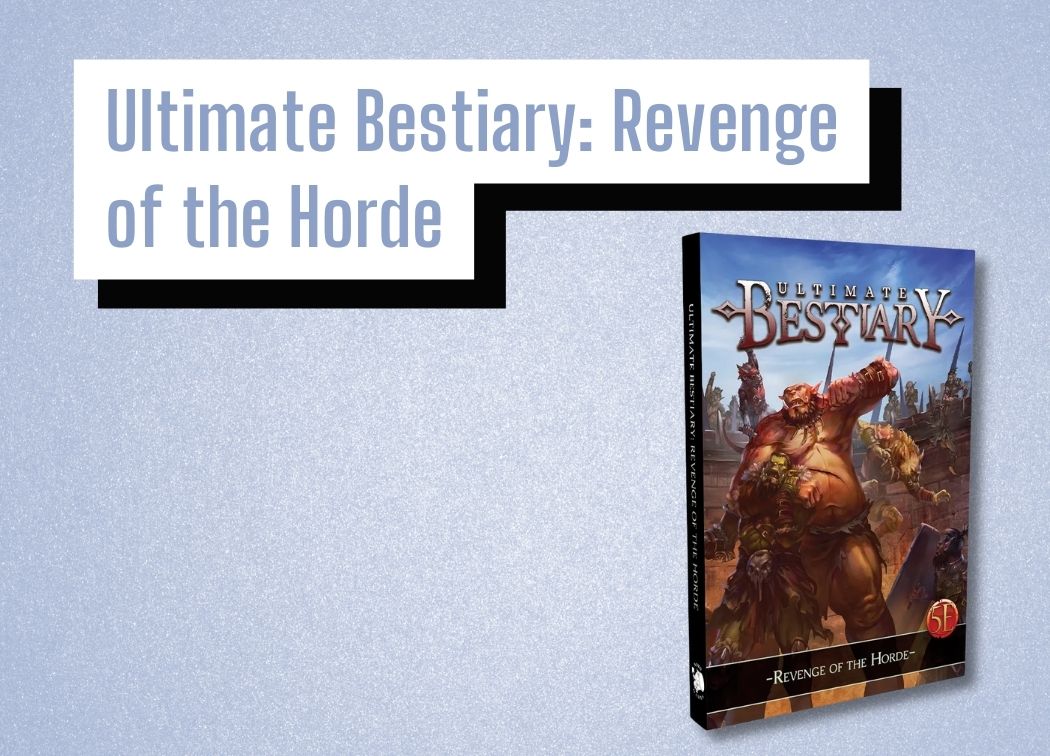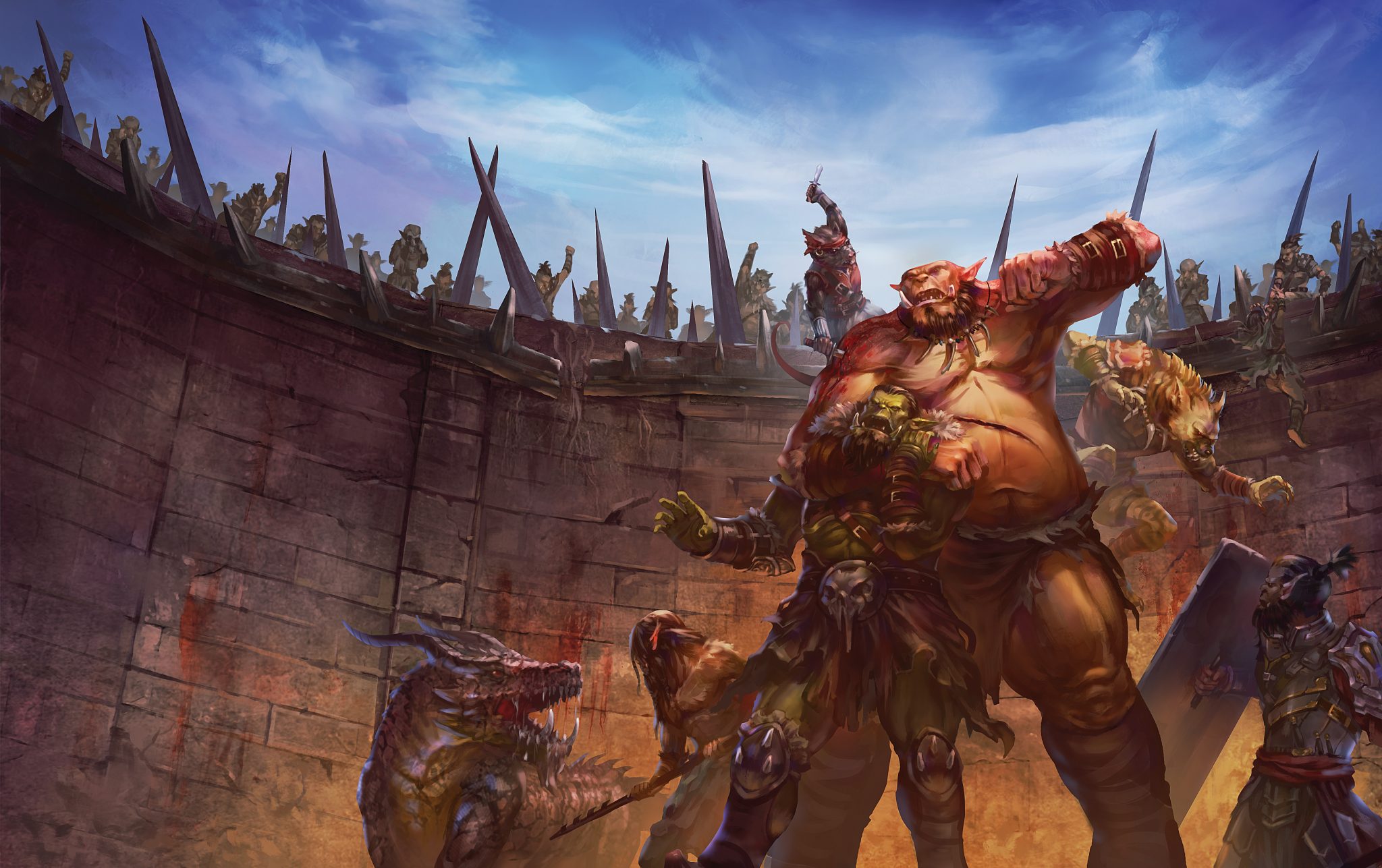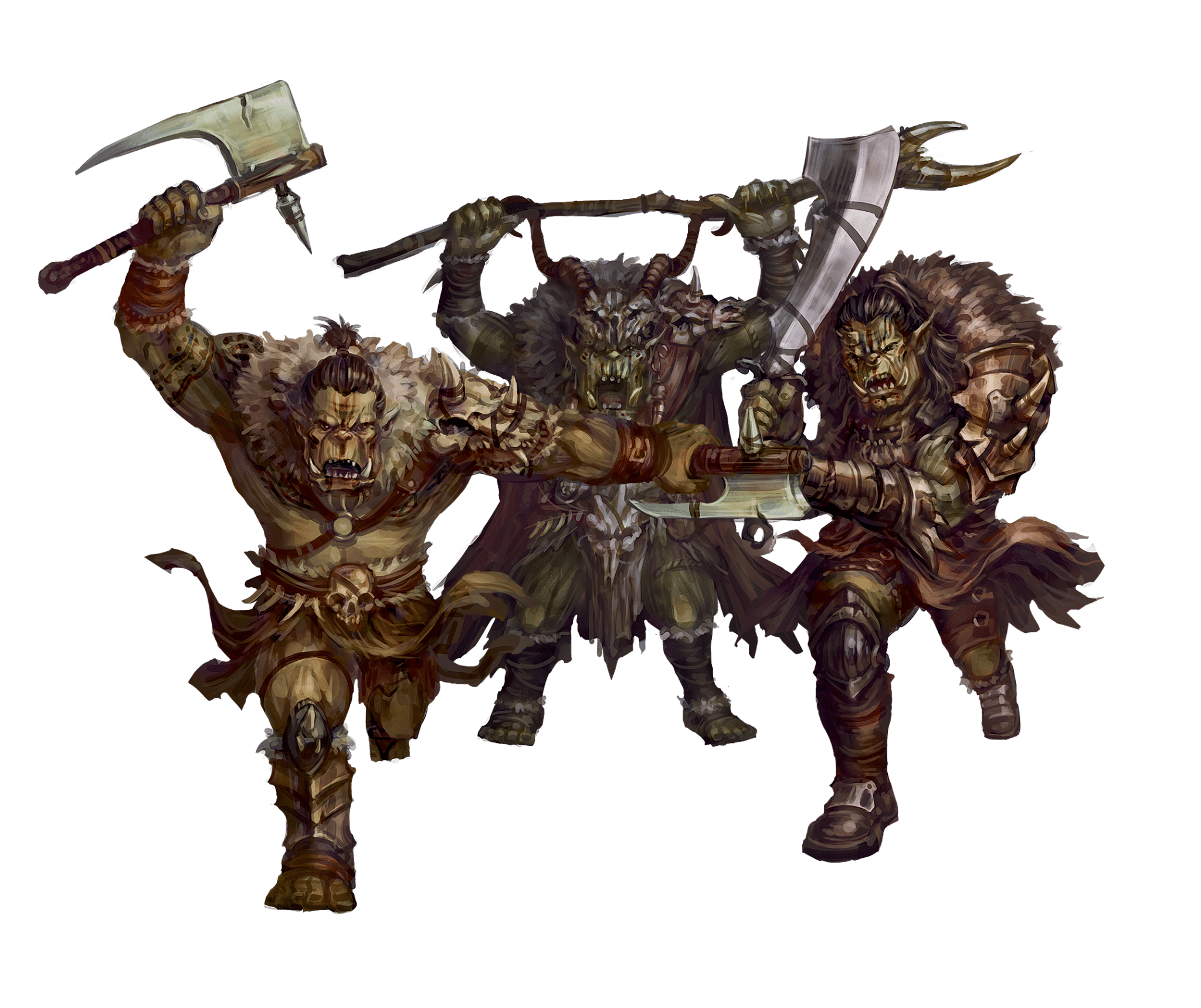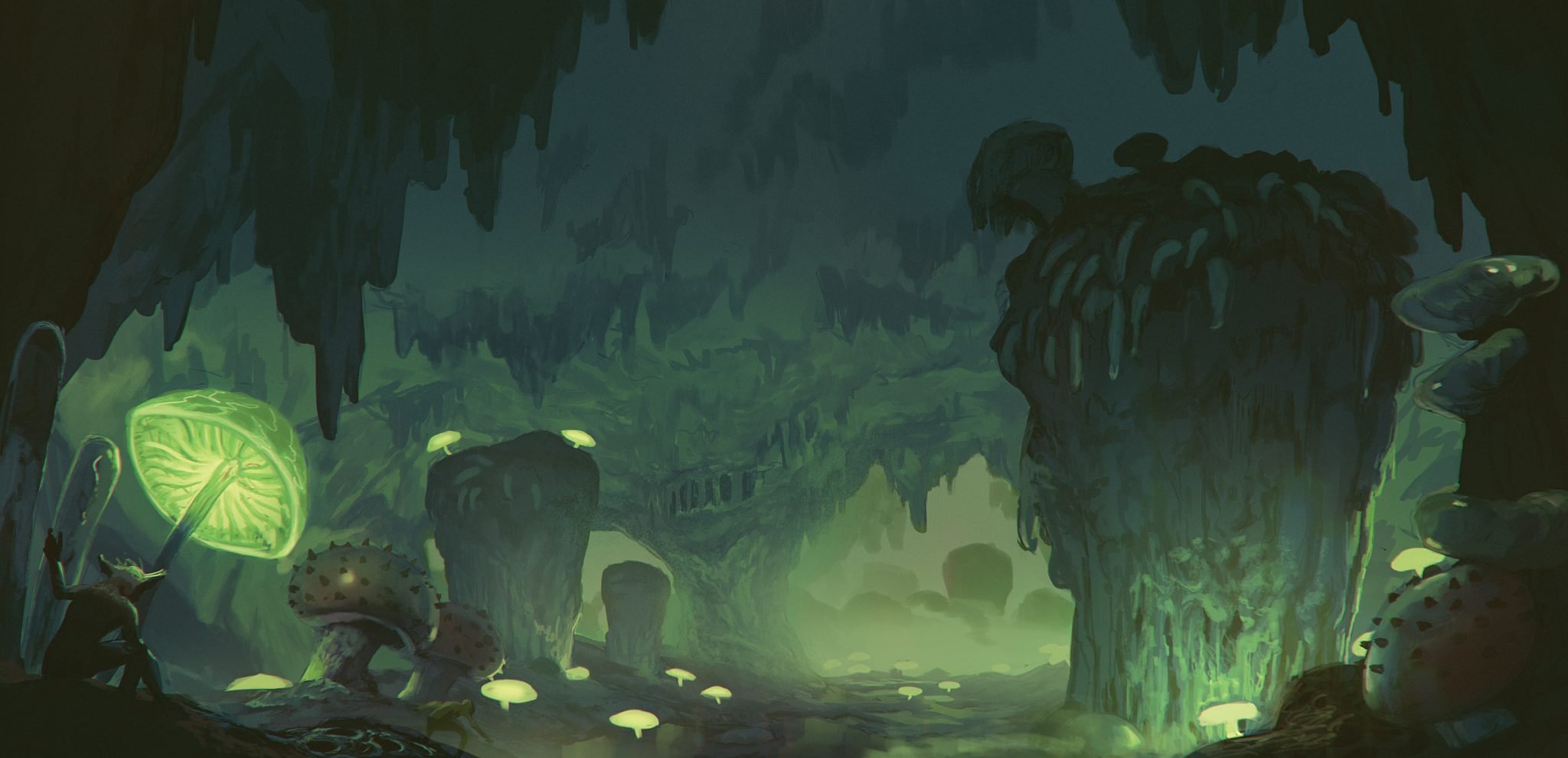Ultimate Bestiary: Revenge of the Horde

Ultimate Bestiary: Revenge of the Horde by Nord Games is a creature compendium filled with statblocks and lore for monstrous creatures that gravitate towards communal hunting, fighting, and survival.
I noticed many similarities between Revenge of the Horde and Volo’s Guide to Monsters (VGtM). Both books thrive off of taking existing creatures and giving them new flavors or creating more powerful versions of them. Revenge of the Horde specifically does this with bugbears, gnolls, goblins, hobgoblins, kobolds, orcs, and trolls.
Revenge of the Horde also includes a species of creature that they created themselves, the okiti, which we talked about last week. They’re a humanoid race with rat-like features that can be found primarily in the slums of coastal cities. They share a lot of mechanical similarities with kobolds and goblins.
It’s a treasure trove of statblocks, lore, and other goodies for D&D 5e Dungeon Masters. That’s not to say there isn’t anything for players in Revenge of the Horde as there is some stuff, but the book is absolutely made for DMs looking for new creature options and lore.
Keep in mind that they’re on the last few days of their latest Kickstarter for their next book in the Ultimate Bestiary series, The Dreaded Accursed. Be sure to check it out if Revenge of the Horde piques your interest!

Quick Disclaimer: I received a copy of this book from Nord Games, however, this did not impact my review of the book in any way, shape, or form!
Well-Formatted and Full of Excellent Artwork
You all should know by now how much I love a well-formatted PDF. Revenge of the Horde is masterfully formatted and extremely easy to read. The pages themselves are neat and professionally polished with plenty of pictures, tables, excerpts, and subheadings to break-up walls of text.
The PDF version is entirely searchable and has a plethora of bookmarks which let you jump to any specific section you desire. Well-made PDFs such as this are a godsend for people like me who play their RPGs entirely online.
The book is full of fantastic artwork with nearly every page having at least one piece of art. The majority of the art in the book consists of full-color images of the creatures themselves, but there are also scenic paintings to show off a creature’s environment or set the scene of a chapter.
The art style itself feels very “D&D-like” as if it were something you’d find in an official book from WotC. I think it works in the book’s favor more than anything. As I said before, this book reminds me of VGtM. It feels like an extension of the Monster Manual and the artwork definitely helps to set this tone and feeling.
All the artwork in this article comes straight from Revenge of the Horde by the way. If you like what you see, you’ll like what you find in the book!
A Horde of New Creature Statblocks
For the most part, the book caters to low to low-mid CR creatures, but there are a few mid and high CR creatures thrown into the mix. The vast majority of the creatures range from CR 0-6.
They’re also very-well balanced as a whole. There may be a few outliers here and there, especially at the higher CRs, but balance as a whole is well-done. There is clearly a professional level of polish that went into these creatures.
Quite a few of these creatures do hit slightly-above their respective CRs compared to creatures from official sources. However, that’s by no means a negative remark towards the book. If anything, I feel as though creatures from the official sources can be too weak at times.
I find that a lot of 3rd-party creatures and resources give a bit more heft to their statblocks. A common way that Revenge of the Horde adds a bit of additional combat prowess is that it’s not afraid to give low CR creatures high AC. A kobold with half-plate and a shield? Sure, knock yourself out.
In terms of game design, many times when you have high AC creatures fights can seemingly drag on due to the party having a more difficult time landing blows. However, to counteract this, creatures with high AC in Revenge of the Horde typically miss out on having large health pools. High AC and low CR creatures tend to worry me, but Nord Games did their due diligence with ensuring that the creatures are balanced with this in mind.

Traits, Traits, and More Traits!
My favorite aspect of all the statblocks in this book are their traits. Most of the species of creatures share a universal trait between the majority of the members of their species. For instance, gutter gnolls all have the Contagious feature which forces a non-gnoll creature to make a Constitution saving throw or contract a disease when they come into contact with a gutter gnoll.
In terms of flavor, traits help to showcase the differences between the different types of creatures shown in Revenge of the Horde. Gutter gnolls have Contagious, plains gnolls have Sprinter to increase their mobility, and rock gnolls have Rocky Camouflage to help them ambush unsuspecting prey. A single trait brings a lot of flavor into the statblock. It carves out a niche for each type of creature within the book and their counterparts in official sources.
Not only are these traits flavorful, but they also create a more engaging playstyle by spicing up a creature’s statblock. The first time your players encounter a gutter gnoll they’ll probably change-up their tactics to try to avoid dealing with Contagious. This will differ with their typical gnoll-killing strategy of spreading out their formation to avoid letting them make use of Rampage.
A Plethora of Lore for Each Type of Creature
Each species of creature has a section that talks about their general personalities, behaviors, and cultures. Typically this is reserved for more general discussion about the species as a whole.
Some creature species in Revenge of the Horde don’t have subspecies so their lore is a bit more in-depth from the start. These additional pages dive into their specific culture, environment, and combat tactics. These sections are all well-written, but they’re not terribly long. They’re just enough to give a DM a guideline on how to play and introduce these creatures to their players.
A fair number of creatures have subspecies, such as the gnolls with their plains, rock, and gutter gnolls. Each of these subspecies gets their own individual sections on their preferred environment, combat tactics, and culture in addition to the more general sections on the gnoll species as a whole.
Most of the species in Revenge of the Horde live and hunt in packs, clans, colonies, etc. There are a few paragraphs for each three of these types of communities for the applicable creatures. Not only do these give plenty of great information to use these communities as-is, but they also serve as a guideline as to how to whip up your own unique community for these creatures.
Tables and Tables Galore!
There are tons of tables throughout Revenge of the Horde. Not only are they convenient for generating some on the fly encounters, but there are tables for adding flavor and flair to the creatures within the book.
First off, for each species or subspecies of creature, there are sets of tables that have premade encounters based on their CR. If you need a quick fight that’s roughly CR 5 in difficulty, there are one or two premade encounters in a table for you to pick from. If you have a wider threshold of 5-8, for example, there’s a table with a few premade encounters for CR 5-8. You can simply roll and drop the result into the game.
There are also tables to determine what trinkets a given creature may have on them or what notable equipment they’d have on their bodies when the players search them. Some creatures may have special ammunition or unique weapons that they can use in combat based on these tables!
There is also a table for lair descriptions for each species or subspecies of creature. I actually like this layout more than a more traditional way of describing a lair in paragraph form. These descriptions give you a great base to work off of to create your own unique lair, or you can use a few different aspects and combine them together to create a lair on the fly.

A Playground of Extras Throughout the Appendices
Beasties, Weapons, and Maps!
Revenge of the Horde is undoubtedly geared towards DMs in particular. It should come as no surprise to you that three of the four appendices are DM-oriented.
The first appendix is a quick foray into some of the different beasts and animals that are mentioned throughout the course of the book. This is cool because it gives you a few more statblocks to throw in for encounters as well as some new tools for beastmaster rangers and spells like Conjure Animals. Quite a few of these creatures have unique traits or actions that help them differentiate themselves from a standard beast in 5e.
My favorite appendix is Tools of the Horde which has various potions, tools, and consumables that are unique to each of the tribes, communities, clans, etc. in the book. There are some really unique items in this section.
The catch with these items is that many of them have a random effect table that the user has to roll after they consume the item. The results can range from dealing damage to themselves, imposing a mechanical disadvantage on themselves, or actually benefitting from the consumable. Don’t worry, there are plenty of items that just work as intended too!
The final appendix is a set of 10 unique lair maps. These are all gridded and can be easily copied and pasted out of the PDF and dropped into a virtual tabletop program or printed for in-person play. My only quip with these maps is that I’d have liked to know the dimensions for sizing them in something like Roll20. Regardless, they’re well-detailed and easy to use in play.
Character Races for Each of the Creature Types
There is an entire appendix dedicated to character race options for each of the species/subspecies in the book. Well, provided that they are a small or medium-sized creature. That being said, that’s the overwhelming majority of the creatures in the book, so there are a lot of race options to pick from.
Many of these races already exist in official sources, for example, goblins, kobolds, and bugbears. In these cases, the race option for these races in Revenge of the Horde focuses on a specific subset of goblins. For example, the kobold racial option is a warren kobold which is a kobold that is much more heavily influenced by dragons. They’re smarter and have a pseudo-resistance similar to the dragonborn’s draconic ancestry.
My personal favorite is the legionary hobgoblin. One of their traits is that they give nearby allies a +1 bonus to AC provided that you’re wielding a melee weapon. This fits in well with both their militaristic flavor and their playstyle of a front-line combatant.
Conclusions
All in all, I really enjoyed Ultimate Bestiary: Revenge of the Horde. It’s an excellent foray into some iconic D&D creatures while giving them some new and exciting flavors.
The book is very well made and you can absolutely tell it was professionally developed due to its excellent formatting. The PDF is completely searchable and has a robust index for quickly finding the creature or topic you desire if you have a physical copy of the book.
There’s a ton of great flavor and lore for each and every creature in this book. It’s all well-written and concise meaning that you can read a couple of pages of text and be an expert on each of these species and subspecies of creatures. You won’t experience information overload when reading this book, but you’ll have all the tools you need to run these creatures masterfully.
If you’re a DM looking for a new compendium full of old D&D favorites this is a fantastic addition to your collection!
However, if you’re looking for a creature compendium full of undead then you should absolutely take a look at their current Kickstarter for their newest addition to the Ultimate Bestiary series.
